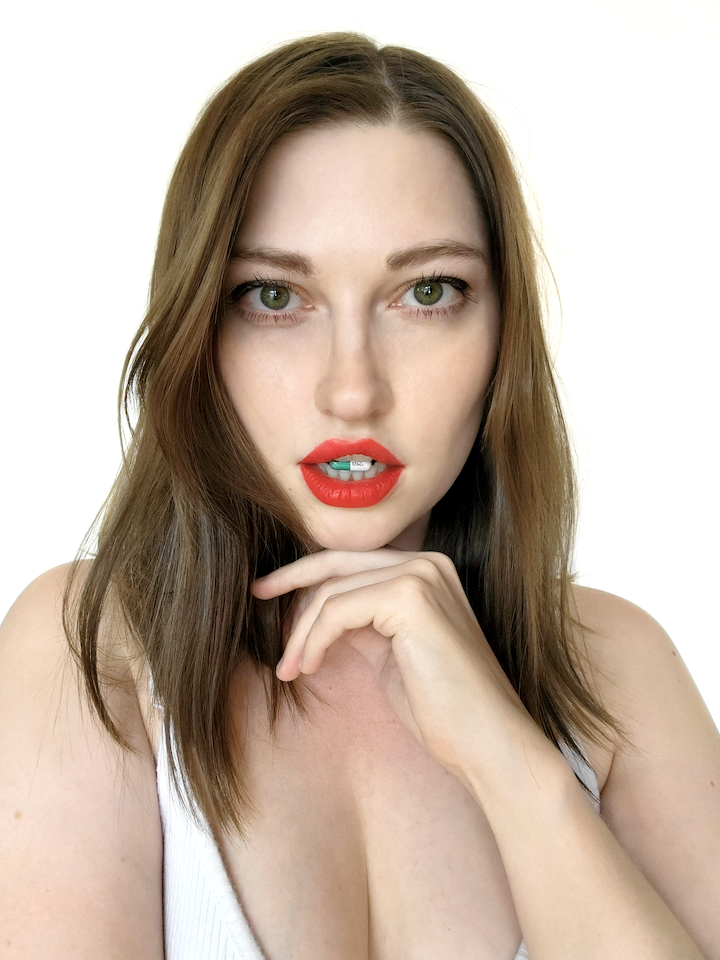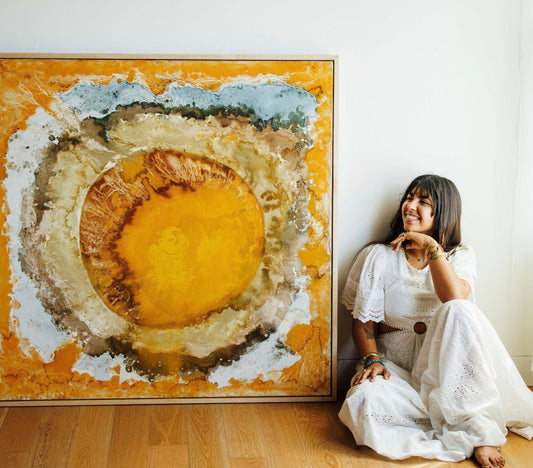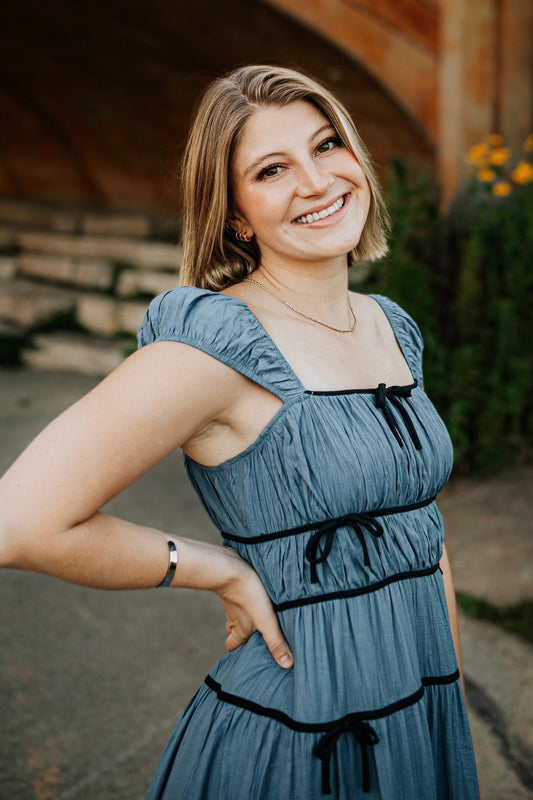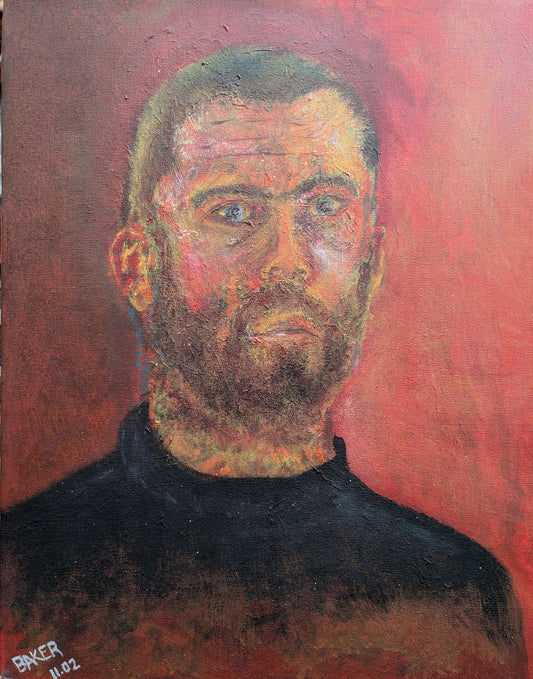Kodi Delaney is a Denver-based artist who works mainly with paper and ink. After speaking with her, her main point for her work was creative output to reflect her journey as a person and use her social media platform to advocate for other neurodivergent people in the fine art space, from public schools to curated galleries and social media.
Kodi considered herself a bit of a bully while wrestling with the self-image of being lazy, dumb, and inadequate in the US public school system when in reality, she was struggling with undiagnosed ADHD. She was always “the art kid.” Unfortunately, those students receive the least amount of attention in public schools. When budgets need to be cut, the art programs are typically the first to go.
“They don't care about art kids. They just care about whether or not you're good at testing.” Kodi said.

It wasn’t just the schooling system that failed her. She’s open on her social media pages about how her family also did not meet her needs early on. Her mother became manic-depressive after a near-fatal car accident while trapped in a domestic-violence situation. While she felt neglected by her immediate family, her grandparents did the opposite by holding high expectations for her art education and extracurricular activities. She was involved in every extracurricular activity possible, from playing instruments to riding horses. This experience showed her a duality in raising children in her rural community. Being stuck between these two approaches made her feel like nobody knew what to do with her, both in school and at home.
Amongst the turmoil of her current school and troublesome family life, her aunt brought her to visit a school in Thompson Valley. A particular exercise stuck out to her where they were drawing shells with pen and ink. After the activity, the teacher looked at her and the drawings and asked if she was in the gifted and talented program at the school—that was the first time she was asked about a gift or talent in a school system. That moment stuck out to her as a turning point where she realized she was an artist.
“A lot of people with ADHD kind of go through that phase; it was the first time that a teacher had really like said anything nice to me in that category, and it connected with me,” Kodi said. She related to other students with ADHD, where it is common to go through this phase in schooling where it feels like the student is failing the institution, not vice versa.
From that point, she started attending Thompson Valley, where her grades improved. Going to a place that met her academic needs more than the school helped her flourish as an artist and allowed her to grow as a person. The teacher who sought out her skills in the gifted program became her mentor for her four years in high school. For Kodi, going to this school altered the course of her life.


“Truly, that was what changed the course of my life,” Kodi said. “I got a lot better. I was able to heal and get some therapy. I was formally diagnosed in my sophomore year with ADHD and was able to get medication for that and therapy for that. I got better grades then, and I got my full-ride scholarships for my years at CSU.”
Kodi started her college career at Colorado State University’s (CSU) art program in Fort Collins, Colorado. After two and a half years, she decided the program wasn’t right for her. She switched schools and majors to biology at Metro Denver with a pre-med track for three years. All was going well. She became a lab tech and had an internship, but she fell out of love with working in science as a practice. “I love learning about science, and I love the classes. I loved everything about it, but then in practice, I just found it a bit boring,” She said.
After leaving Metro Denver, she waited tables, directionless, when a friend reached out to her about her portraits to join Sun Rose Art Collective. Their business model revolved around the mass production of art in stickers, small prints, and postcards. Some of her older designs are still available in the shop. However, she wanted to focus on more of a creative output approach instead of art and mass production and began pursuing art full-time during the pandemic instead of waiting tables on the side.
After finding her ground as a full-time artist, she had the time and space to reflect on her academic journey, mental health struggles, and domestic situations on the page. Her pieces are curated toward her sensory preferences just as much as her message. For example, using gold leaf alongside her more muted color palette appeals to her sensory preferences. Overbearing bright colors can bring feelings of anxiety, so she opts for toned-down neutral hues and warm gold leaf to accentuate her portraits.
“I like to focus more on the patterns, the textures, and the technique rather than the colors, So gold is just kind of this perfect in-between where it's bright and vibrant, and it counterbalances the cold tones of the greys and blacks, so I love using it,” Kodi said. “Not everybody is super into gold as I am, but gold just feels warm. It feels like a fire in a fireplace, and I've always really really liked that I only wear gold jewelry, gold on my glasses, and gold accessories all the time.”

Her piece titled A Stretch for Death skyrocketed on her social media platforms as more and more people resonated with its messages. With this explosion of social media attention came praise and criticism alike. While a lot of people connected with the art, some did not agree with her approach to advocating for the topic. Instead of focusing on the art, they began criticizing her as a person, which initially took a toll on her mental health. Her flexibility and grace for herself did not falter from these encounters, though, and she took a step back from social media. Kodi recalled her partner reaching out to her and providing support through this time, telling her to “take a break. Take whatever break you need.”
However, we find a shared love in A Weight on My Shoulders. Kodi considers this piece her magnum opus so far “It's not one of my most popular ones, but I have been unable to recreate aspects of it, and I think that is probably a sign that it was made with love.”
Kodi feels it is more important than ever to talk about mental health and neurodivergence within art, especially in more curatorial settings. “The art world isn't built to let us thrive,” Kodi said. While Kodi Delaney found her place as a neurodivergent person in the art space, she feels more work needs to be done for people like her who thrive in creative settings. Unfortunately, the world we live in is one where creative voices are sacrificed for curation. As she’s experienced throughout her life as a student and as an artist, productivity issues tend to arise when inspiration is given harsh deadlines. In the gallery space, quantity is everything—otherwise, how would they make sales?

Much of this toxic mindset surrounding creative output in the gallery scene dates back to the 80s and 90s. Kodi talked about how during that time, there were still neurodivergent artists finding their footing in inspiration just like she did. These galleries needed lots of work from the artists to keep sponsoring them, so when creative burnouts hit in the wake of unforgiving deadlines, these artists turned to drugs and alcohol to stimulate themselves. As a result of this environment, these creative voices were killing themselves for their art, focusing on the quantity of inspiration above all else.
Her experiences as an up-and-coming artist during the pandemic and advocacy for more flexible working conditions for artists reflect a more modern interpretation of what it means to be an artist, especially with the growing importance of social media presence for art. “You don't have to depend on galleries anymore, which is absolutely incredible. And that's how I got my start, and I'm able to create without feeling pressured. That's, I think, a huge, huge improvement for neurodivergents, especially those with ADHD who have issues with their norepinephrine, you know, function in their body. So they don't have productivity,” Kodi said.
With the importance of social media in the art community comes the desire to present a clean, curated profile, showing only the best moments for artists and revealing final products without showing what goes on behind the scenes. For Kodi, showing the process is part of the art and her mission as an artist and advocate. “You're gonna have pieces that you struggle with that, you know, we're going to get there, but it's going to be more difficult. And I think it's important to show those pieces as well.” Kodi said.
Kodi’s dedication to her craft and to the voices of other neurodivergent artists will outlive the unethical practices involved in modern curatorial spaces. Her background shaped her journey as a creative mind and her active voice in the art space will help shape the journey of future artists. “I don't want to just be an artist that was great in my time. I want to be an artist who thrives throughout my life in the way that I was meant to thrive in something more flexible.” Kodi says.
©ArtRKL™️ LLC 2021-2023. All rights reserved. This material may not be published, broadcast, rewritten or redistributed. ArtRKL™️ and its underscore design indicate trademarks of ArtRKL™️ LLC and its subsidiaries.





